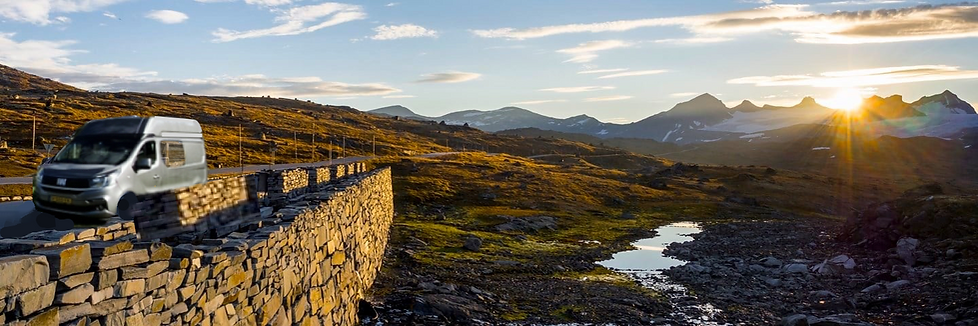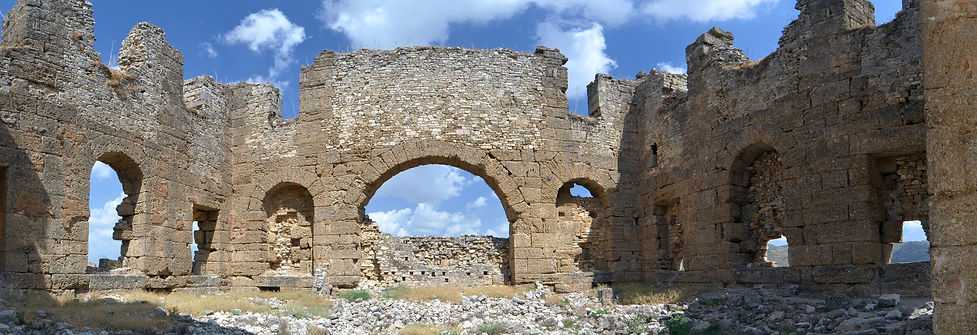

Turkey Historic grounds





This road trip takes you past the Greek and Roman footprints on Turkish soil, the historical sites are generally, certainly not coincidentally, in a beautiful environment often along a beautiful coastline.
The route mapped out is a combination of two trips, the first trip dates from 1977, at the time made by public transport or rental car.
For motorhomes I have added campsites as close as possible to points of interest or as a base to Greek en
People have been living in Turkey since 20,000 BCA. In the Bronze Age, the first cities were built by the Hatti people, who were driven out by the Hittites. They in turn founded the first empire here, which lasted until the 12th century. Greek culture and trade flourished around that time and that has also left its mark in Turkey. In ten years, Alexander the Great founded more than sixty cities. After his death, the Greeks were succeeded by the Roman Empire, which occupied large parts of Anatolia, then called Asia Minor. At the end of the 1st century, all of Turkey was under the control of the Romans.
After the collapse of the Roman Empire, the Islamic Empire finally emerged in 632 and the Arabs became increasingly powerful in Turkey. Six centuries later, the Ottoman Empire emerged, one of the largest empires that ever existed. In the 17th century, the empire reached its greatest extent. Then it slowly crumbled.
Roman cities of the past, several renovated and expanded with a museum, others have survived the erosion of thousands of years as ruins, and simply lack the budget to renovate everything.
Ask for a full route map including campsites
Ephesus








Ephesus consists of successive Hellenistic and Roman settlements. It is located at the former mouth of the Kaistros River. The settlements moved to new locations as the coastline receded westward. Excavations have revealed important monuments from the Roman Imperial era, including the library of Celsus and the great theater. Only fragments of the famous Temple of Artemis remain. This temple, one of the Seven Wonders of the World, attracted pilgrims from all over the Mediterranean. From the fifth century BCA, many Christian pilgrims flocked to the House of the Virgin Mary, a domed cruciform chapel seven kilometers from Ephesus. The ancient city of Ephesus is a unique example of a Roman port with a canal to the sea and an inner harbour.
knidos





The ancient city of Knidos is located on the coast and is very well preserved. However, excavations are still being done and the existing ones are being cared for (the temples, churches, amphitheater are over 4500 years old...) A breathtaking view. The last photo, an art impression of the original city
Tlos





Tlos was one of the largest and oldest cities in Lycia, located on a hill on the east side of the Xanthos Valley near lime. Tlos is considered one of the most important religious cities of Lycia, and the city is one of the few Lycian cities that has been continuously inhabited for thousands of years (until the 19th century). In addition to the city walls from Luwian and Roman times, an agora, theatre, stadium, market, gymnasium, bathhouse, and remains of a Byzantine church have been excavated. In addition to ancient Greek and Roman remains, the site also contains ruins of Ottoman fortresses.
phaselis





The historical past of Phaselis, the ancient city of Antalya, dates back to before the BCA era. It dates back to the 7th century. It remained under the rule of Alexander the Great and Pholemaios for many years, and then it was dominated by a pirate named Zeniketes. Later the dominance of the ancient city was taken by Rome and in the Byzantine period it went down in history as a bishopric. Finally BC. In 693 a port city was founded here and it was dominated by the Rhodesians.
You can have hours of fun using the picnic areas of this region, which has access to land and sea. Moreover, Phaselis Beach, an unmissable opportunity for lovers of sea, sun and beach holidays, is one of the most private beaches in Antalya and offers its holidaymakers an insatiable experience.
Aspendos



No one knows for sure the exact construction date of the city. However, historians agree that the city originated in the 10th century BC, immediately after the end of the Trojan War. Over time, the city was owned by the Greeks, Persians and Romans. In the 4th century BC the city was conquered by Alexander the Great. Later the city fell into the hands of the Greeks, until the Romans finally occupied it. It was during the reign of the Roman Empire that Aspendos experienced its best days. During this period, the city prospered significantly thanks to established trade with other cities and countries. But already in the 13th century the city fell into disrepair and became vacant.
perge





The ancient city of Perge is the second best preserved archaeological site in Turkey after Ephesus. Perge is close to the seaside resorts of Antalya, Belek and Side and, together with Aspendos and the ancient Side, can easily be visited in a day. Although most of the ruins date from the Hellenistic and Roman periods, Perge was one of the most important cities of Pamphylia. The main monuments include the 12,000 seat theatre, the agora with shops on the cour (with mosaic floors), the walls and gates, the Roman baths, the gymnasium, the memorial fountain and the necropolis.
side




The city has a history that goes back to classical antiquity, when the area where Side is located was still called Pamphylia. Founded in the seventh century BC, Side was an important port city in this region. Different peoples ruled Side in the first centuries. In this period the ancient Side was created, which can still be visited today. A reasonable part of the old Side has been well preserved and can be visited today. Unfortunately, not everything has survived. Wars, fires, natural disasters and other forms of decay have destroyed part of ancient Side. A new center has been created on the spot where the old town once stood. Between the buildings from the twentieth century, there are still some antique remains, such as the Temple of Apollo.
Altinkaya - Selge




We visited Altinkaya, surrounded by the village of Selge, late 70s early 80s. I want to highlight this for our special story . Altinkaya is missing from the map of places of interest, so it was quite a search for us due to the lack of road signs. Nearby we passed a man with a shotgun on his shoulders, from the car window we tried to get advice about the route to Altinkaya, but it is difficult to communicate if you don't speak each other's language. With limited advice, however, we continued on our way to no avail, later we passed the man again, after signaling with hand gestures that we can't find it, he didn't care, opened the back door and got into the car with his son. a shotgun and instructed us. In the end he turned out to live at the foot of the amphytheater and we parked there, then he showed us around Altikaya. Afterwards we drank tea with his family in his house. A special experience.
The view over the valley from the top of the Amphytheater is very special, with the mountain peaks in the background.
Sagalassos







The 3000 year old city of Sagalassos at 1500 meters altitude on the slopes of the Akdag mountain massif. This city was founded in 546 BC BCA. incorporated into the Persian Empire. The young men of this city were mercenaries and later became Generals of Alexander the Great because of their martial arts. The city had great wealth, as evidenced by the excavations carried out since 1990 under the direction of Prof. Marc Waelekens of the Free University of Leuven. The city was destroyed by an earthquake in 590 AD and everything was buried. Due to the fact that the city was very remote and the remains disappeared under the rubble, almost everything has been preserved. In the first years of the excavations by the VUB, the Helenistic well building (+/- 50 BCA.) was excavated in almost intact condition, and shortly afterwards also the library with its beautiful mosaic floor. During the following years, almost all parts of the city were exposed and large parts rebuilt. During the excavations, beautiful statues were found, these are now housed in the museum of Burdur. Replicas were placed on the site. An absolute must.
Pamukalle - Hierapolis






Originating from springs in a cliff nearly 200 m high overlooking the plain of Cürüksu in southwestern Turkey, calcite-laden waters have created an unreal landscape, consisting of mineral forests, petrified waterfalls and a series of terraced basins named Pamukkale (Cotton Palace). Located in the province of Denizli, this extraordinary landscape has been a point of interest for visitors to the nearby Hellenistic spa town of Hierapolis. Remains of the Greco-Roman period include baths, temple ruins, a monumental arch, a nymphaeum, a necropolis, and a theater. The combination of striking natural formations and the development of a complex system of channels, which carry the thermal waters to nearby villages and fields, is exceptional. The springs are the source of a hydraulic system that extends 70 km northwest to Alasehir and westwards along the Menderes River valley. Pamukkale provides an important backdrop to the original Greco-Roman city of Hierapolis and the cultural landscape that dominates the area.
Aphrodisias





The history of Aphrodisias, the most famous of the cities dedicated to Aphrodite, dates back to before the BCA era. It goes all the way back to 5000. The city, which is a prehistoric settlement, was called Aphrodisias in the year BC. It was given by the Roman state in the 2nd century. Excavations in the theater area of the city found inscriptions that mention a golden statue of Eros that the Roman leader Caesar gave to Aphrodite. For this reason, Caesar is thought to have come to Aphrodisias and offered his loyalty to the goddess.In the 6th century BCA Aphrodisias was a small village and during this period the first temple of Aphrodite was built. The region, which began to grow rapidly in the 2nd century, was given the title 'polis', meaning the city-state of the Greeks. BC Roman Emperor Augustus in the 1st century; He took the city under his personal protection by saying: "I choose this city for myself
Istanbul





Istanbul,in the period that I highlight was the name of this city Constantinople, the city was then mainly situated on the European part west of the Bosphorus. The most important structures that have survived from that period are the underground water reservoirs, the city walls and the Yoros castle.
Hopefully I have succeeded in combining a cultural holiday with a relaxing holiday or at the nearby beach or the beauty and tranquility of the nature reserve in which many of these destinations are located. Enjoy !!